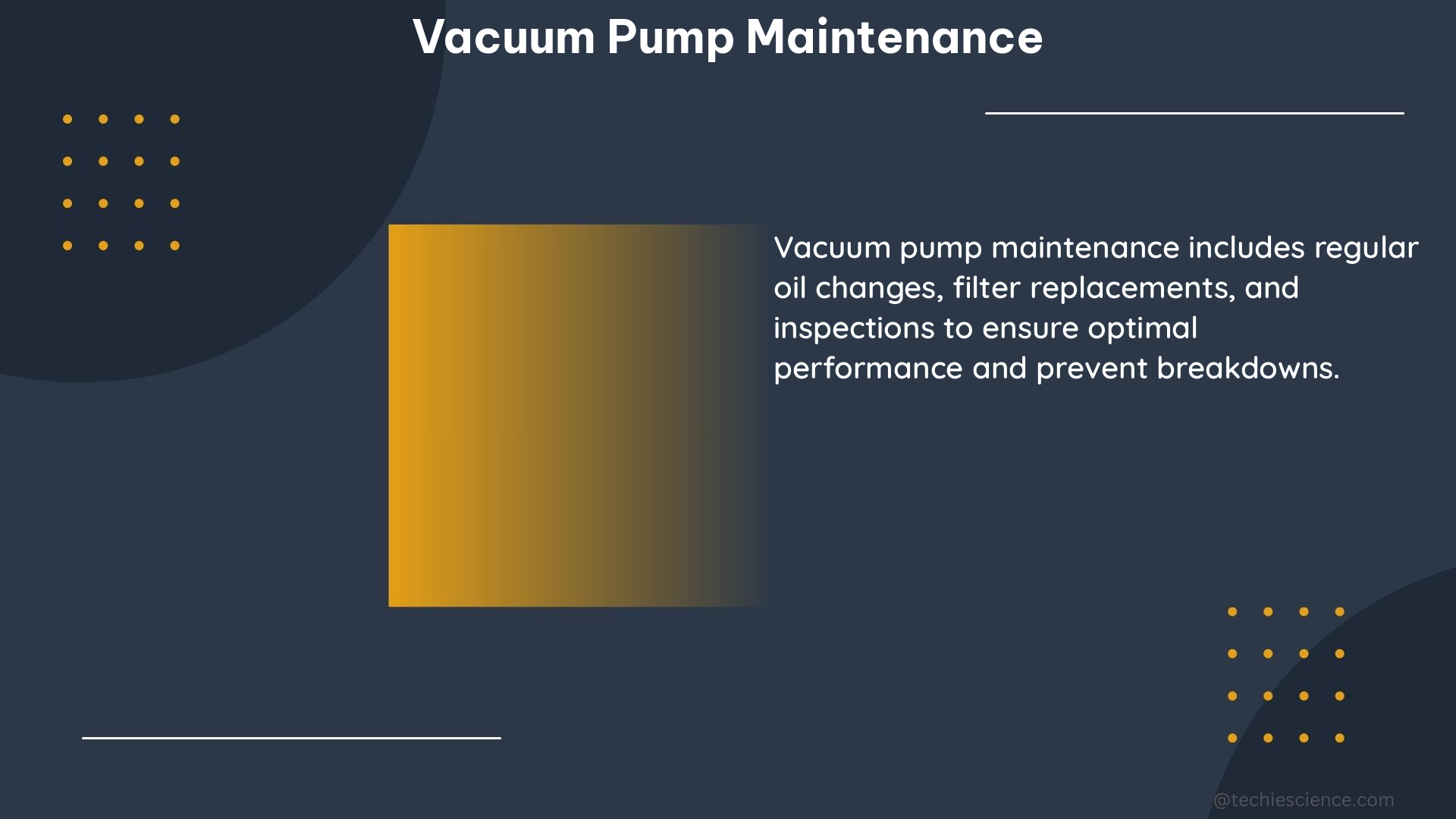Vacuum pump maintenance is a critical aspect of ensuring the longevity and optimal performance of your vacuum system. By following a structured maintenance routine, you can maximize productivity, minimize downtime, and prolong the life of your vacuum pump. This comprehensive guide will provide you with the necessary technical specifications, measurable data points, and best practices to effectively maintain your vacuum pump.
Visual Inspection
Regularly inspecting your vacuum pump is the first step in maintaining its optimal performance. Begin by visually examining the pump for any signs of wear, damage, or leaks. Most vacuum pumps come equipped with a sight glass, allowing you to easily monitor the condition of the pump oil. Look for any discoloration, contamination, or foaming in the oil, as these can be indicators of potential issues.
Oil Changes

Oil changes are a crucial component of vacuum pump maintenance. For oil-sealed rotary pumps, the oil should be changed every 3,000 hours of operation or at least once a year, whichever comes first. When changing the oil, ensure that you use the recommended oil type and viscosity specified by the pump manufacturer. The new oil should be added slowly to prevent air from entering the system, which can compromise the pump’s performance.
| Pump Type | Oil Change Interval |
|---|---|
| Oil-Sealed Rotary Pumps | Every 3,000 hours of operation or annually |
| Dry Scroll Pumps | Every 8,000 hours of operation or annually |
| Diaphragm Pumps | Every 2,000 hours of operation or annually |
Leak Testing
Performing periodic leak testing is essential to ensure a vacuum-tight seal in your system. Leaks can be detected using acetone or specialized leak detection fluids. The allowable leak rate will depend on the specific application and the required vacuum level. For high-vacuum applications, the leak rate should be less than 1 x 10^-9 mbar·L/s, while for rough vacuum applications, the leak rate can be up to 1 x 10^-3 mbar·L/s.
Airflow and Temperature Monitoring
Monitoring the airflow and temperature around the vacuum pump is crucial for maintaining optimal performance. Changes in these variables can indicate issues with the pump or the surrounding environment. Ensure that the pump is installed in a well-ventilated area and that the ambient temperature remains within the manufacturer’s recommended range, typically between 10°C and 40°C.
Ultimate Vacuum Level Measurement
Measuring the ultimate vacuum level achieved by the pump is an essential step in vacuum pump maintenance. This can be done using a vacuum gauge directly attached to the pump or at various points in the system. The ultimate vacuum level will depend on the type of pump and the specific application. For example, a rotary vane pump can typically achieve an ultimate vacuum level of 2 x 10^-3 mbar, while a turbomolecular pump can reach an ultimate vacuum level of 1 x 10^-9 mbar.
Pumpdown Time Measurement
Measuring the time it takes for the pump to reach a specific vacuum level can provide valuable insights into the pump’s performance. Changes in pumpdown times can indicate issues with the pump or the surrounding system. The pumpdown time will depend on the pump’s capacity, the volume of the system, and the required vacuum level. For a typical laboratory application, the pumpdown time from atmospheric pressure to 1 x 10^-3 mbar should be less than 5 minutes.
Maintenance Logging
Maintaining a detailed maintenance log is crucial for diagnosing future problems and scheduling maintenance activities. Record all routine maintenance, repairs, and component replacements, including the date, time, and any relevant observations. This information will be invaluable when troubleshooting issues or planning for future service.
Running Hour Meter Installation
Installing a running hour meter on your vacuum pump will help you track the number of operating hours between service activities. This data can be used to schedule maintenance and replace worn or damaged components before they fail, reducing the risk of unexpected downtime.
By following these best practices for vacuum pump maintenance, you can optimize productivity, prolong the life of your pump, and minimize costly repairs and interruptions in production. Remember to always refer to the manufacturer’s recommendations and guidelines for specific maintenance procedures and intervals.
References:
- Leybold: Five Vacuum Pump Maintenance Tips to Optimize Productivity
- Reddit: Vacuum Pump Maintenance
- Goldleaf Labs: Vacuum Pump Maintenance
- Agilent Technologies: Vacuum Pump Maintenance and Troubleshooting
- Edwards Vacuum: Vacuum Pump Maintenance Best Practices

The lambdageeks.com Core SME Team is a group of experienced subject matter experts from diverse scientific and technical fields including Physics, Chemistry, Technology,Electronics & Electrical Engineering, Automotive, Mechanical Engineering. Our team collaborates to create high-quality, well-researched articles on a wide range of science and technology topics for the lambdageeks.com website.
All Our Senior SME are having more than 7 Years of experience in the respective fields . They are either Working Industry Professionals or assocaited With different Universities. Refer Our Authors Page to get to know About our Core SMEs.